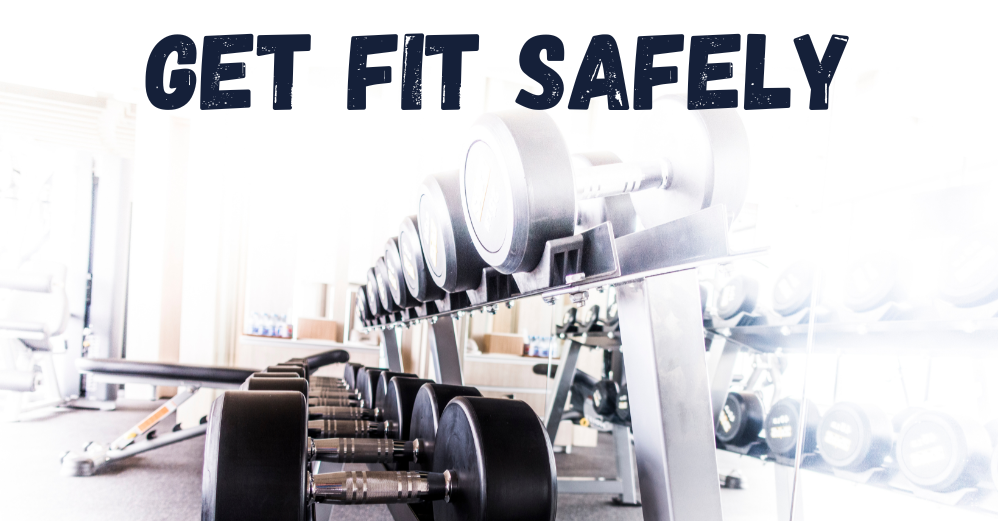Have you ever caught yourself wondering if taking three full days to rest a muscle group is pushing it too far?
You’re not alone!
In the world of fitness, striking the right balance between training hard and giving your muscles the downtime they need can be a bit of a puzzle.
Let’s dive into whether three days of rest is the magic formula or just overkill for your gains.
| Personal Take |
| I used to think two days was perfect. |
| But after hitting a plateau, I decided to give three days a try. |
| Guess what?
My muscles loved the extra time. |
| Strength started to increase, and recovery felt way better. |
| Sometimes, slow and steady really does win the race. |
| Changing my rest schedule made a huge difference. |
| It was like giving my body the reset it needed. |
| No more feeling burnt out or sore all the time. |
| Now, I listen more to what my body is telling me. |
| If I need that extra day, I take it. |
| It’s all about finding what works best for you. |
| Don’t be afraid to tweak your routine. |
| What worked for me might not work for you, and that’s okay. |
| Keep experimenting until you find your sweet spot. |
| Stay patient, stay consistent, and watch those gains come in! |
The Rest Debate
Rest days are crucial.
They allow muscles to recover and grow.
But is three days too long?
Some say yes, others swear by it.
Let’s break it down.
When you work out, you stress your muscles.
Rest is when the magic happens.
Your muscles repair and get stronger.
Without enough rest, you might not see the gains you want.
Some trainers recommend hitting each muscle group twice a week.
They believe shorter rest keeps the progress flowing.
Others argue that three days of rest maximize muscle growth.
It really comes down to your goals and how your body feels.
From my own journey, I’ve seen both sides work.
Sometimes, a bit more rest helped me push harder during workouts.
Other times, shorter breaks kept my energy up.
The key is to listen to your body.
If three days feels right, go for it.
If you’re ready sooner, adjust your schedule.
There’s no one-size-fits-all answer.
Find what works best for you and stay consistent.
Your Goals Matter
Are you aiming for strength, size, or endurance?
Strength Seekers: If building raw power is your goal, shorter rest periods might be the way to go.
Two days can keep the momentum flowing and help you lift heavier over time.
Staying consistent with less rest can lead to impressive strength gains.
Bodybuilders: For those focused on muscle size and definition, three days of rest can make a big difference.
This extra time allows your muscles to fully recover and grow, leading to bigger and more sculpted gains.
Patience pays off when you give your muscles the downtime they need.
Endurance Athletes: Training for endurance?
You might need even more recovery time.
Your muscles are working hard over longer periods, so additional rest days can help prevent fatigue and improve overall performance.
What Is Systemic Fatigue?
Ever feel like you’re running on empty, even when you haven’t had a tough workout?
That’s systemic fatigue creeping in.
Systemic fatigue isn’t just about tired muscles.
It affects your entire body and mind.
Think of it as your body’s full-body exhaustion after prolonged stress or intense training.
I remember those days when no matter how much I rested, I still felt wiped out.
It wasn’t just my muscles aching; my whole body felt drained.
Systemic fatigue can slow down your progress and make everyday tasks feel like a struggle.
Recognizing Systemic Fatigue
You might notice:
- Persistent Tiredness: Feeling exhausted even after a good night’s sleep.
- Mood Changes: Increased irritability or feeling down without a clear reason.
- Decreased Performance: Struggling to lift weights or complete your usual workout routines.
- Sleep Issues: Trouble falling asleep or staying asleep, making recovery harder.
Listen to Your Body
No two bodies are the same.
If you’re feeling exhausted or sore, don’t push it.
Rest is not a sign of weakness.
It’s your body’s way of saying, “I need a break!”
Pay attention to how you feel after workouts.
If you’re constantly drained, it might be time to take it easy.
Ignoring these signals can lead to injuries or burnout.
I remember times when I pushed too hard and paid the price.
Taking a rest day helped me recover and come back stronger.
So, always listen to your body.
Give it the rest it needs to perform its best.
Stay in tune and respect your limits.
Training Intensity Counts
High-intensity workouts can take a real toll on your muscles.
If you’re lifting heavy or doing intense cardio, three days might just be the sweet spot.
When you push your limits, your body needs more time to repair.
Heavy lifting creates more muscle damage, requiring extra recovery time.
Intense cardio sessions drain your energy reserves, too.
Taking three days to rest allows your muscles to fully recover and grow stronger.
From my own workouts, I’ve found that after a tough session, an extra day of rest makes a big difference.
It prevents burnout and keeps me injury-free.
On the flip side, if your workouts aren’t as intense, you might not need as much rest.
Finding the right balance between intensity and recovery is key to seeing progress and staying consistent.
Balance is Key
Don’t make rest days an excuse to be lazy.
Use them wisely.
I used to think rest days meant doing nothing, but that’s not the case.
Light activities like walking or yoga can keep you moving without overloading your muscles.
It’s all about staying active while giving your body a break.
Think of it as a gentle hug for your muscles.
Nutrition is key.
Fuel your body with the right nutrients. Eating well helps your muscles repair and grow stronger.
I learned not to skip meals—your gains depend on what you put in your body.
Snack smart and keep those protein levels up!
Sleep is another biggie.
Aim for 7-9 hours a night.
Sleep is your body’s natural recovery tool. It’s when all the magic happens.
Skimping on sleep? Not a good idea.
Your muscles need their beauty sleep just as much as you do.
Balancing rest with smart activities, proper nutrition, and quality sleep creates the perfect recipe for progress.
One Big Mistake is Skipping Warm-Ups
I’ve been there—jumping straight into heavy lifting or intense cardio without preparing my muscles.
Trust me, it can lead to injuries you don’t want.
Always take a few minutes to get your blood flowing and muscles ready for action.
It makes a world of difference.
When I first started my fitness journey, I thought I could save time by skipping warm-ups.
I’d dive right into my routines, feeling ready to conquer those weights or crush that cardio session.
But soon enough, I began to feel tightness and occasional aches that no workout should bring.
It was frustrating and a clear sign that something wasn’t right.
Warm-ups aren’t just a formality; they’re a crucial part of your training.
They increase your heart rate, improve blood circulation, and prepare your joints and muscles for the demands ahead.
Whether it’s a light jog, dynamic stretches, or mobility drills, a proper warm-up sets the stage for a safer and more effective workout.
Not only do warm-ups reduce the risk of strains and sprains, but they also enhance your performance.
I noticed that after incorporating warm-ups into my routine, I could lift heavier and push harder without feeling as fatigued.
It’s like giving your body a heads-up that it’s about to work hard, making everything flow smoother.
Here are a few of my favorite warm-up techniques:
- Dynamic Stretching: Moving stretches that mimic the exercises you’ll be doing. Think leg swings, arm circles, and torso twists.
- Light Cardio: A brisk walk, a slow jog, or a few minutes on the bike to get your heart rate up.
- Mobility Exercises: Focus on areas that need extra attention, like hips, shoulders, and ankles, to improve your range of motion.
Smart Strategies to Boost Your Rest Day Benefits
Rest days are your secret weapon for making gains and staying injury-free.
To get the most out of them, think of rest as an active part of your training.
I used to think resting meant doing nothing, but that changed when I started adding light activities into my routine.
Yoga, stretching, or even a casual walk can keep your muscles loose and boost your flexibility without putting too much strain on them.
Nutrition plays a huge role in recovery.
Make sure you’re eating a balanced diet rich in protein, healthy fats, and plenty of veggies.
This fuels your muscles and helps them repair and grow stronger.
Don’t forget to stay hydrated too—water is essential for every bodily function, including muscle recovery.
Sleep is another critical component.
Aim for 7-9 hours each night to give your body the downtime it needs to heal and rebuild.
Quality sleep can boost your mood, energy levels, and overall performance in the gym.
Taking the time to properly manage your rest days can make a huge difference in your fitness journey.
It’s not just about taking a break; it’s about optimizing your recovery so you can come back stronger and more motivated.
I’ve noticed that when I prioritize my rest days, my workouts feel more effective and my energy levels stay high.
Embrace your rest days and watch how they enhance your workouts and overall well-being.
Stay committed, stay balanced, and let your rest days work for you!
Is Taking Five Days Off Between Muscle Workouts Excessive?
So, you’re thinking about taking five days off between hitting the same muscle group. Is that too much?
Honestly, it depends on where you’re at in your fitness journey.
I remember when I first started lifting,
I thought more rest was always better.
I’d take five days off, convinced my muscles needed all that downtime.
At first, it felt great—I was recovering well and avoiding soreness.
But after a while, I noticed my progress stalled.
My strength wasn’t increasing, and my workouts felt a bit sluggish.
That’s when I realized balance is everything.
For some folks, especially those pushing heavy weights or training at high intensities, five days might just be what they need to fully recover and come back stronger.
Everyone’s body responds differently, and what works for one person might not work for another.
On the flip side, if you’re not lifting super heavy or if your workouts aren’t too intense, five days might feel like overkill.
You could be missing out on valuable training time that helps you build muscle and improve endurance.
It’s all about finding that sweet spot where your muscles recover without losing momentum.
Here’s my take:
Listen to your body. If you’re still feeling sore or drained after three days, giving it an extra day or two could make a big difference.
But if you’re ready to go sooner, don’t be afraid to jump back in.
It’s all about tuning into how you feel and adjusting your rest days to match your needs.
Experiment with different rest schedules and see what works best for you.
Maybe start with three days and see how your body responds.
If you feel like you need more, gradually add an extra day.
The key is to stay flexible and keep your fitness goals in sight without burning out.
Remember, rest is just as important as the workouts themselves.
It’s not about how many days you rest, but how you use those rest days to fuel your progress.
Stay tuned, stay strong, and find what rhythm keeps you moving forward!
Factors to Consider for Muscle Group Recovery Time
Ever wondered how to figure out the perfect number of rest days for each muscle group?
It’s not a one-size-fits-all deal. I came across a really insightful discussion on Quora that got me thinking about the key factors involved.
Let’s break them down!
Volume
Volume refers to the total amount of work you do for a muscle group.
This includes the number of sets and reps.
Higher volume means more stress on your muscles, which can lead to greater growth but also requires more recovery time.
I remember pushing my legs with extra sets and realizing I needed more rest to bounce back strong for the next workout.
Intensity
Intensity is all about how hard you’re working.
Are you lifting heavy weights or going for high-intensity cardio?
Higher intensity workouts create more muscle damage, signaling your body to take longer to repair and grow.
I used to go all out every day, but learned that dialing back the intensity a bit gave my muscles the time they needed to recover and get stronger.
Rate of Perceived Exertion (RPE)
RPE is a subjective measure of how hard you feel you’re working during a workout.
On a scale from 1 to 10, how challenging does your workout feel?
If you’re consistently hitting high RPEs, your muscles are under significant stress and will need more time to recover.
I found that paying attention to my RPE helped me adjust my training intensity and avoid overtraining.
Muscle Group Size
Larger muscle groups, like your legs and back, typically require more recovery time compared to smaller muscle groups like biceps or triceps.
Bigger muscles endure more strain and thus need longer to heal and grow.
I noticed that after intense leg days, I needed a bit more downtime compared to when I focused on smaller muscles.
Can You Train the Same Muscle Group 4/5 Days in a Row?
Ever thought about hitting the same muscle group 4 or 5 days in a row?
It’s a bold move, and you might be wondering if it’s a recipe for success or a path to burnout.
Let’s break it down!
I remember when I first started my fitness journey, I was eager to see results fast.
I decided to train my chest every single day, thinking that more was better.
At first, it felt awesome—consistency was key, right?
But soon enough, things started to go south.
My chest felt perpetually sore, my workouts lost their punch, and motivation took a nosedive.
That’s when I realized: rest is just as important as the workout itself.
The Pros and Cons
Pros:
Increased Frequency: More training sessions can potentially lead to faster muscle growth.
Skill Improvement: Repeating exercises more often can improve your form and technique.
Mental Focus: Staying focused on one muscle group can help you master specific movements.
Cons:
Overtraining Risk: Without adequate rest, muscles don’t have time to recover and grow.
Injury Potential: Constant strain on the same muscles increases the risk of strains and other injuries.
Burnout: Mentally and physically, training the same group every day can lead to fatigue and decreased motivation.
Final Thoughts
So, is three days resting per muscle group overkill?
Not necessarily.
It really depends on your training intensity, goals, and your body’s needs.
If you’re pushing hard, three days might be just what you need.
For others, it could feel like too much.
The key is to listen up and stay in tune with how you’re feeling.
Stay consistent with your workouts and don’t be afraid to adjust your rest days.
Sometimes, tweaking your routine is all it takes to break through plateaus and keep making progress.
Remember, fitness is a personal journey.
What works for one person might not work for another.
Find your rhythm and stick with what helps you grow stronger and healthier.
Stay strong and keep pushing!





